In a remarkable discovery near the ancient city of Pompeii, archaeologists have unearthed an almost perfectly preserved Roman ceremonial chariot. This rare find, encased in volcanic ash for nearly two millennia, offers a captivating glimpse into the opulent world of ancient Roman festivities. The chariot, adorned with intricate bronze medallions depicting satyrs, nymphs, and cupids, is a testament to the wealth and cultural sophistication of its time. As excavation continues, this extraordinary artifact is reshaping our understanding of Roman ceremonial life, offering a window into the grandeur of ancient celebrations and elite processions.
Location and Preservation of the Chariot
The chariot was found in the remains of a villa in Civita Giuliana, about 700 meters north of Pompeii. Unlike many other vehicles found in the area, which were used for daily activities like transport and work, this particular chariot was designed for ceremonial purposes. The villa was discovered after police uncovered illegal tunnels used by looters, leading to the site. These tunnels, which reached depths of up to five meters, threatened to damage the chariot, but miraculously, it was spared from harm. The volcanic material that buried the region also helped to preserve the chariot, with its intricate details, including iron wheels, bronze decorations, and even the imprints of ropes and flowers that once adorned it.
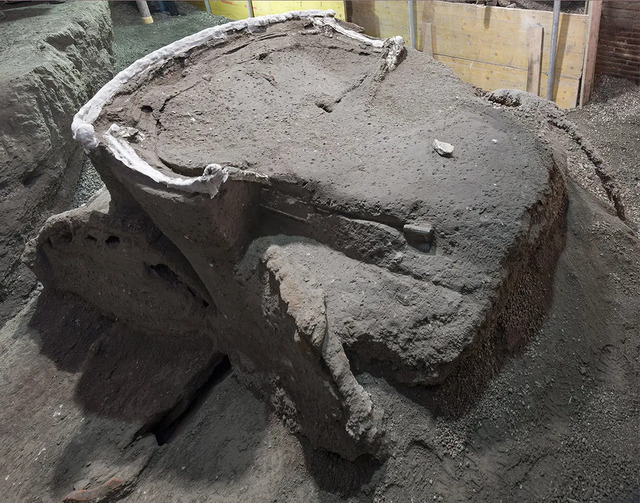
Historical Context: Pompeii and Its Suburbs
Pompeii, with its population of about 13,000, was a bustling Roman city when it was destroyed by Vesuvius. The eruption covered the city with ash and pumice, preserving buildings, frescoes, and even the bodies of its residents. Civita Giuliana, located outside the city walls, was part of the suburban area, where wealthy Romans often built villas.
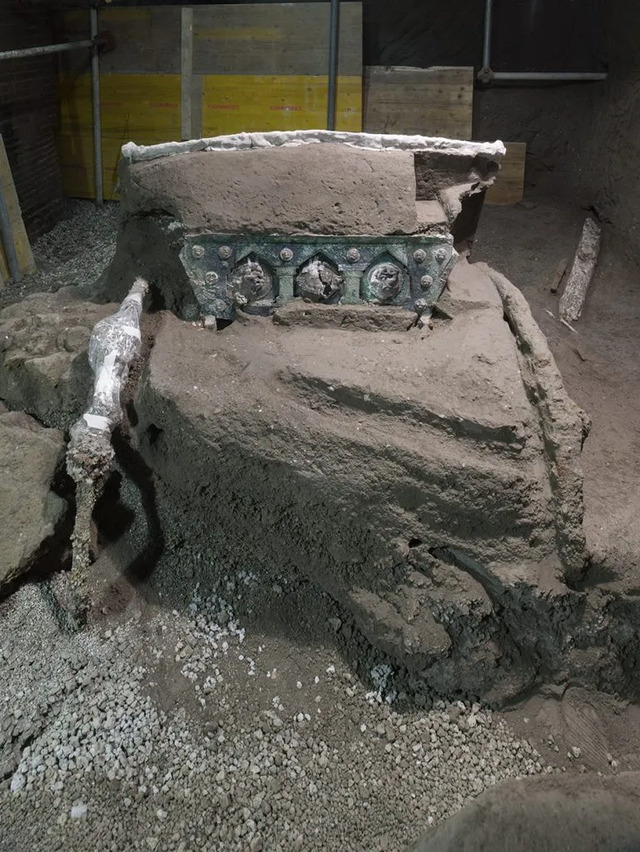
This region, once home to an affluent society, provides valuable context for understanding Roman life, from daily activities to grand ceremonies. The discovery of this chariot in such a well-preserved state offers further insight into the lives of the elite who lived in these suburban areas, illustrating how they celebrated significant events with grandeur and spectacle.
Video
Watch the video Archaeologists Uncover Intact Ceremonial Chariot in Pompeii Ruins to witness this stunning discovery from the ancient world.
The Chariot’s Design and Decorations
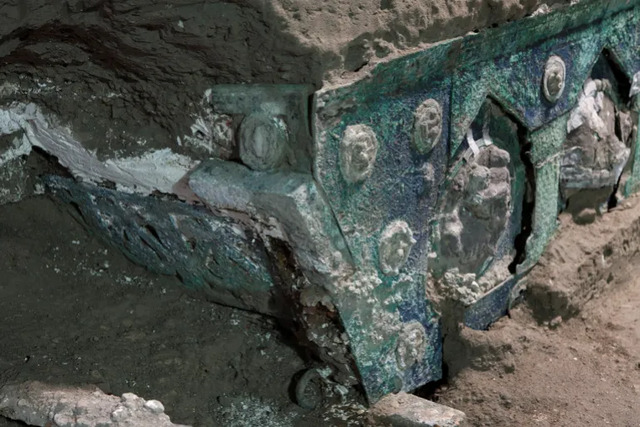
The chariot itself is a stunning example of Roman craftsmanship, made of iron, bronze, and tin. Its four iron wheels, metal armrests, and backrests indicate its high status, suggesting that it was used in important public and religious events. The decorations on the chariot are particularly noteworthy: medallions featuring satyrs, nymphs, and cupids, some of which depict erotic scenes.
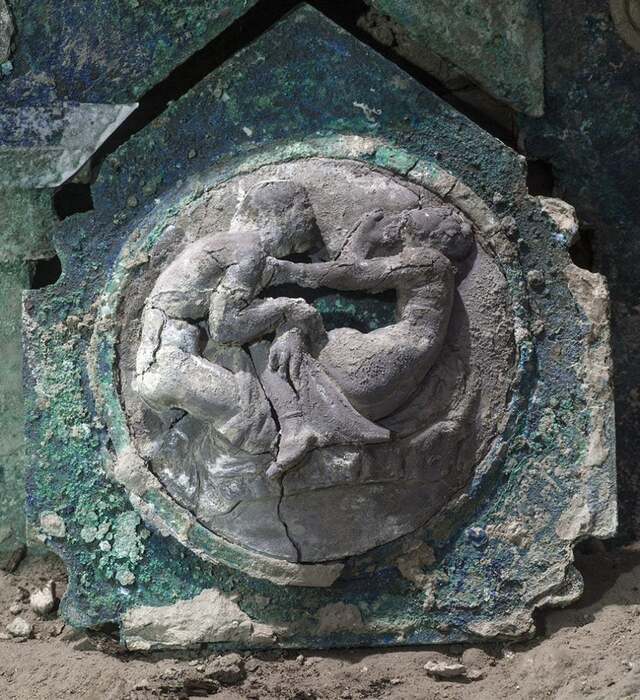
These intricate designs reflect the Roman taste for elaborate adornments, and their presence on a ceremonial vehicle underscores the luxury and importance of the chariot’s use. The chariot was not a mere functional vehicle; it was a symbol of Roman culture, rich in both artistic expression and social significance.
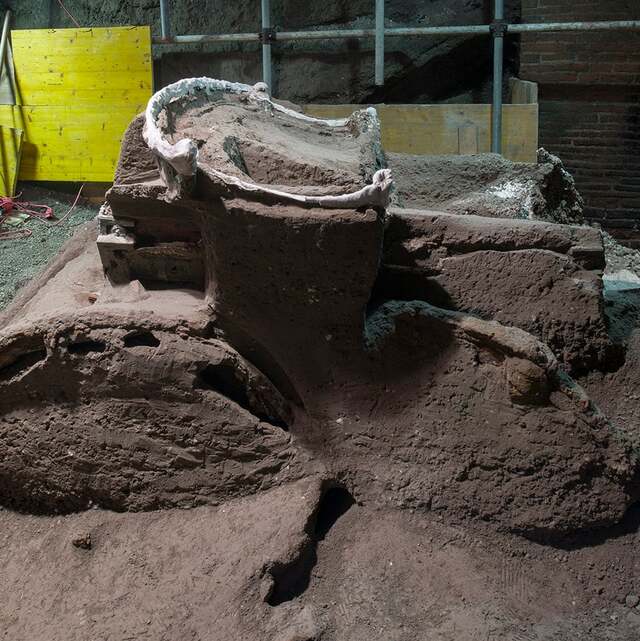
The Chariot’s Role in Ancient Roman Society
The chariot is believed to have been used in festivals, parades, and processions—events that were central to Roman civic life. These ceremonies often involved the display of wealth and power, and the chariot would have played a key role in showcasing the prestige of its owner, likely a wealthy elite or member of the Roman upper class.
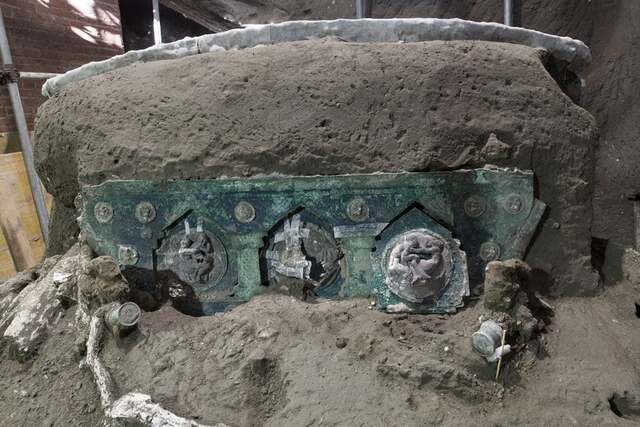
One of the most intriguing theories is that the chariot may have been used in weddings, particularly in the ceremonial transport of brides to their new homes. In Roman society, weddings were grand affairs, and the use of such a lavish chariot would have marked the occasion as an important social event. This connection to marriage and public festivals emphasizes the cultural and religious importance of the chariot in Roman life.
Looting and the Preservation of Archaeological Sites
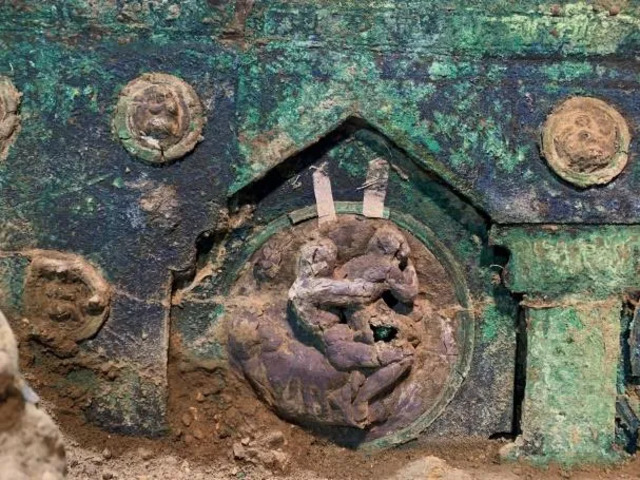
The chariot’s discovery also highlights the ongoing issue of looting at archaeological sites. In recent years, looters have dug tunnels to steal valuable artifacts from Pompeii and its surrounding areas. The discovery of the chariot at Civita Giuliana came as a result of an investigation into these illegal activities.
The looters’ tunnels, which had reached the site and grazed the chariot, were fortunately not enough to cause significant damage. Archaeologists have since worked diligently to excavate the chariot and preserve its state for future study. The fight against looting remains a priority for the Italian authorities, as the protection of such significant archaeological sites is vital for understanding the ancient world.
Archaeological Insights: What the Chariot Reveals About Ancient Rome
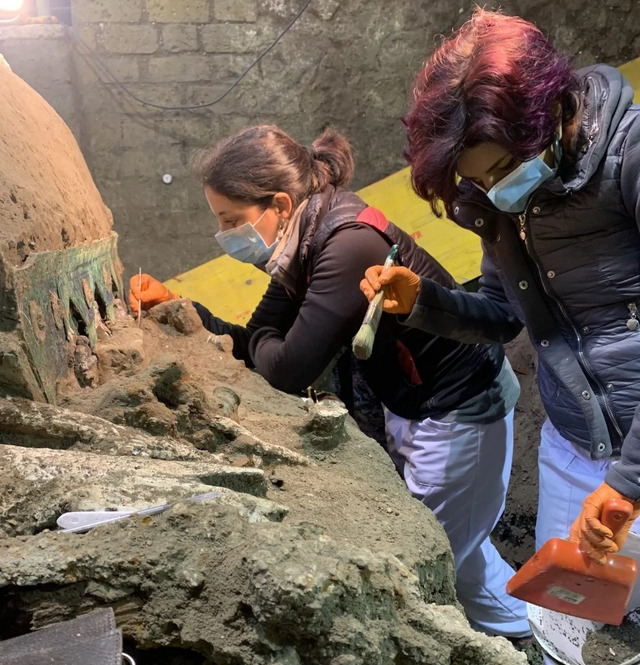
This discovery offers archaeologists invaluable insights into ancient Roman society. First, it highlights the role of ceremonial objects in Roman life, particularly those associated with public display and religious practices.
The chariot’s use in festivals, weddings, and possibly processions reveals how the Romans used lavish objects to reinforce social hierarchies and display their wealth. Moreover, the preservation of this chariot provides a rare look at Roman craftsmanship and design, allowing experts to study the materials, construction techniques, and artistic styles that were popular during the era.
Other Significant Discoveries at Civita Giuliana
The site of Civita Giuliana has yielded other significant finds in recent years. In 2018, the remains of three horses were discovered, one of which was still saddled and harnessed. These finds, along with the discovery of the chariot, offer a glimpse into the daily life of the wealthy elite in Pompeii and its suburbs. Additionally, last year, archaeologists uncovered the skeletal remains of a man and his slave, believed to have been caught in the eruption of Vesuvius while trying to escape. These discoveries, combined with the chariot, paint a fuller picture of the life and death of the people of Pompeii, adding depth to our understanding of the ancient world.
Restoration and Future Research
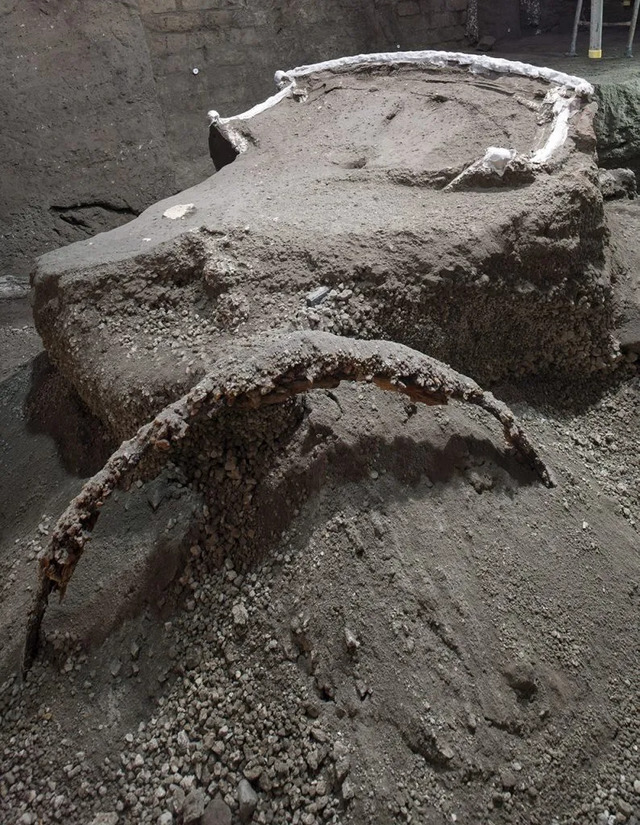
The chariot is currently undergoing restoration at the Archaeological Park of Pompeii’s laboratory. Experts are working to clean and reconstruct the object, ensuring that its fragile components are preserved for future generations. The chariot will likely be displayed as part of an ongoing effort to showcase Pompeii’s many extraordinary finds. As archaeologists continue to explore Civita Giuliana and other areas around Pompeii, they expect to uncover even more treasures that will further illuminate Roman life and culture.
Video
Watch the video The Parade Chariot of Civita Giuliana: Pompeii’s Latest Discovery to explore this extraordinary find from the ancient ruins.
Conclusion: The Legacy of Pompeii’s Excavations
The discovery of the ceremonial chariot at Civita Giuliana is a reminder of the remarkable legacy of Pompeii and the surrounding region. As excavation efforts continue, the site promises to reveal even more about the everyday lives of ancient Romans, their culture, and their social structures. The chariot, along with other finds, helps bring to life the grand ceremonies, public festivals, and rich social rituals that defined the Roman world. Pompeii, with its tragic history, continues to captivate and educate, offering a timeless connection to the past that will inspire generations to come.



